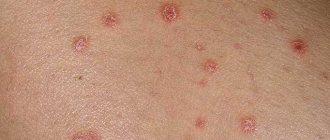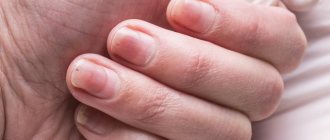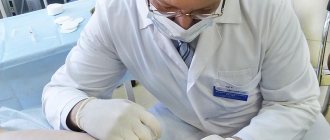The human body is a complex system that requires a number of different substances for its normal functioning. It should be noted that if the body lacks any one component, this leads to the development of diseases, disruption of the functioning of internal organs and the flow of biological processes. One of the most important components, which is the body’s energy resource, is lecithin. Without it, a person could not live, for this reason it is simply necessary to describe this substance, as well as figure out why exactly this component is needed and where to get it.
Phospholipids – emulsifiers and active substances to strengthen the skin barrier
Cosmetologists note that recently in many countries, especially in large cities, the number of people suffering from symptoms associated with conditions such as dry, sensitive or hyper-reactive skin has been increasing.
Experts associate this skin condition with disturbances in the functioning of the lipid barrier of the stratum corneum. One of the reasons for this phenomenon can be considered the content in cosmetic formulations of significant concentrations of substances that can have a destructive effect on the lipid barrier. An example of such substances is surfactants, which can work as part of a cosmetic formulation, including as emulsifiers. Another reason is the large number of aggressive polluting particles in the air of large cities, which can initiate the oxidation of sebum. As a result, the number of people who consider their skin dry, irritated and very sensitive is increasing all the time. We can say that these are people with impaired skin barrier function. In order to strengthen the barrier, it is advisable to introduce ingredients such as phospholipids, which are natural, biodegradable and multifunctional components, into cosmetic formulations. These are not only technical additives that exhibit emulsifying properties and make it possible to obtain lamellar compositions, not only substances that form liposomes, and thereby facilitate the delivery of active ingredients in cosmetics, but also moisturizing active ingredients that deliver linoleic and linolenic acids to the skin. It has been shown that linolenic acid from phospholipids penetrates quite deeply into human skin and can work as a building material - it is included in the skin’s own ceramides and helps strengthen its natural barrier function [1]. There is also evidence demonstrating that phospholipids suppress the development of acne and alleviate skin conditions such as neurodermatitis and psoriasis [1]. Today, the market for cosmetic raw materials offers a large number of products based on phospholipids, which make it possible to create ready-made compositions with optimal cosmetic properties. Moreover, these raw materials are not only imported, but also domestically produced.
The use of lecithin for the skin of the face and body
The component is used by many large concerns. Cosmetics manufacturers also love this phospholipid. Lecithin-based creams are made for different parts of the body: from the face to the heels.
The substance can be contained in all multi-stage care products: cleansing gel or foam, serum or cream. And if you also take lecithin dietary supplements internally, the effect will be amazing.
The component is often added to products for skin peeling and irritation. It’s a good idea to use this treatment, for example, after unsuccessful shaving of sensitive areas. Lecithin should not be neglected by those who suffer from severe dryness and dermatological problems. But before that, it is advisable to consult a specialist.
Chemical structure and properties of phospholipids
From a chemical point of view, phospholipids are esters of polyhydric alcohols and higher fatty acids, which contain a phosphoric acid residue and an additional group of atoms of various chemical nature connected to it, for example, choline in the case of phosphatidylcholine or ethanolamine in the case of phosphatidylethanolamine. Depending on which polyhydric alcohol underlies the structure of the phospholipid, glycerophospholipids (based on glycerol), phosphosphingolipids (based on sphingosine) and phosphoinositides (based on inositol) are distinguished. The most common glycerophospholipids in nature are phosphatidylcholine (Fig. 1), which is the main lipid of cell membranes.
Figure 1. Chemical formula and molecular model of phosphatidylcholine
All glycerophospholipids are built according to a single plan, and their molecules are sterically consistent with each other. At the same time, the huge diversity of phospholipids is provided by the variety of fatty acids that make up their molecules. Thus, there are several dozen natural types of phosphatidylcholine (Fig. 2).
Figure 2. Amphiphilic structure of the phospholipid molecule
Due to their chemical structure, phospholipids are amphiphilic molecules. The polar “head” consists of glycerol (or other polyhydric alcohol), a negatively charged phosphoric acid residue and a group of atoms attached to it, often carrying a positive charge. Nonpolar tails are fatty acid residues attached to a polyhydric alcohol by ester bonds (Figure 2). In the case of lysophospholipids (monoacyl phospholipids), only one fatty acid is attached to the glycerol residue, in this case the phospholipid molecule has a cone shape and can form micelles in an aqueous solution (Fig. 3). If the formation of an ester bond occurs along the two hydroxyl groups of glycerol, a diacylphospholipid is formed containing the residues of two fatty acid molecules. The diacylphospholipid molecule has the shape of a cylinder and in an aqueous solution forms lamellar bilayers in which the hydrophobic tails are oriented inside the layer, and the hydrophilic heads are oriented outside (Fig. 3). Thanks to this property, phospholipids are able to form biological membranes (lipid bilayer), liposomes and lamellar emulsions. In these emulsions, phospholipids form bilayers that surround and stabilize the oil droplets. This structure allows you to increase the amount of oils and other lipids in the emulsion, reduce the concentration of other emulsifiers, and the presence of an aqueous phase allows you to include water-soluble biologically active substances in the products.
Figure 3
Phospholipids are essential substances that are indispensable for humans. They are not produced in sufficient quantities in the body and must be obtained from food. Their most important function is direct participation in the construction of cell membranes. According to recent studies, most people do not receive up to 40% of the required phospholipids. The content of phospholipids in edible oils is relatively low and rarely exceeds 2%; the highest content can be noted in soybean, sunflower oils and cottonseed oil - 1.7–1.8%.
Being essential components of the biological membranes of all living cells, phospholipids are non-toxic and very well accepted by the skin.
Health Benefits of Lecithin
· Lecithin promotes the development and full functioning of the brain and the entire nervous system. Also, the described complex of lipids and amino acids is responsible for the absorption of fat-soluble vitamins. The component has an active effect on all humoral processes in the body, normalizing the composition of blood and other biologically important fluids.
· The main task of the produced substance is the homeostasis of cellular structures, since it is a structural component of the cytomembrane of all types of cells. To assess the scale of the importance of the component, it should be noted that about half of the liver, a third of the brain and up to a fifth of all nerve fibers are made of lecithin.
· Another important aspect that characterizes the benefits of the described substance for the body is that without lecithin the formation of new cells is impossible. In this case, the component is involved in the transport of substances synthesized at the cellular level. A lot of the enzyme is present in sperm, as it stimulates reproductive function.
· It is lecithin, or rather its high content in a woman’s blood, that makes it possible to create the most suitable conditions for conceiving and bearing a child. It is for this reason that I often prescribe this component additionally for girls planning pregnancy. The substance participates in the formation of all organs and their functions, contributing to the full development of the fetus.
Use of phospholipids in cosmetics
The most common type of phospholipid in the tissues of animals and plants is phosphatidylcholine (lecithin), which consists of structural residues of phosphoric acid, choline, fatty acids, and glycerol (Figure 1). Lecithin is also the main phospholipid used in cosmetic formulations.
Cosmetic lecithin is described as a mixture of phospholipids that consists primarily of phosphatidylcholine, but may also include components such as fatty acids, triglycerides, sterols, hydrocarbons and glycolipids. Lecithins can be fractionated by phosphatidylcholine content, ranging from "crude" lecithin, containing about 15% phosphatidylcholine and a significant amount of the vegetable oil from which the lecithin was obtained, to skim or fractionated lecithin, containing 25 to 96% phosphatidylcholine. Sources of lecithin for industry can be soybeans, eggs, milk, raw materials of marine origin, rapeseed, cotton and sunflower. The fatty acid composition of isolated phospholipids is typical for each specific type of raw material and determines the temperature at which fatty acids change their mobility. Below a point called the “gel-to-liquid crystalline transition temperature,” the fatty acids are in a rigid gel form. Above this temperature value they are mobile and are in liquid crystalline or liquid form. Phospholipids containing polyunsaturated fatty acids are characterized by a very low (below 00C) transition temperature. This means that at a temperature of 220C, these lipids are in liquid crystalline form and, upon contact with water, form very mobile structures - liposomes. Phospholipids containing unsaturated fatty acids can be converted to phospholipids containing saturated fatty acids as a result of hydrogenation. Such hydrogenated phospholipids are in a gel state at skin temperature and tend to form more rigid and stable membrane-like structures. Recently, mainly soy lecithin or lecithin obtained from other plant materials (rapeseed, sunflower) have been used in cosmetics. There is also a tendency to use lecithin that is not derived from genetically modified soybeans.
Lecithin and its derivatives have the following properties useful in cosmetics [2]:
- emulsification and solubilization
- humidification
- improving barrier function, stimulating the synthesis of ceramides in the skin
- reduction of skin irritation
- reduction in pore size
- reduction of hyperkeratosis
- stimulation of cell proliferation
- increasing the active penetration of other active ingredients into the skin
- hair conditioning supplements
- formation of liposomes and active delivery of active substances
- increased deposition of cationic dyes onto hair.
The Russian market includes both the world's leading lecithin suppliers and Russian manufacturers. The main consumption of lecithin in Russia is the food industry (more than 95%). The leaders in terms of volumes of lecithin imported to Russia are the ADM company - 46% of total imports, Cargrill (13.4%), etc.
Why does the human body need lecithin?
The main benefits of substances from the phosphatidylcholine group for body health:
- Lowers cholesterol levels. Researchers have found that soy lecithin may help increase good cholesterol (HDL) and reduce bad cholesterol (LDL) in the blood. [1] Therefore, it is useful to consume soy protein instead of fatty foods that increase the level of bad cholesterol.
- Improves the condition of the cardiovascular system. Phosphatidylcholines reduce the risk of hypertension or heart disease, according to studies in which subjects were given soy products with lecithin supplements. [2]
- Improves digestion. The effects of phosphatidylcholines were tested on patients with ulcerative colitis, and it turned out that the emulsifying properties of these substances contribute to a chain reaction that increases the amount of mucus in the digestive tract. [3] This, in turn, facilitates digestion and protects the delicate lining of the intestines. But even if a person does not suffer from ulcerative colitis or similar diseases, the use of lecithin helps eliminate or prevent intestinal irritations, as well as other disorders that affect the digestive process.
- Gives a feeling of satiety. Because soy is more difficult to digest than most other foods, the human body takes longer to break it down. This is useful, for example, when following certain diets.
- Reduce symptoms of dementia. Lecithin contains choline, a chemical that the human brain uses to form neural connections. Clinical studies have shown that diets rich in choline improve memory and help people with Alzheimer's disease. [4]
- Soothe and moisturize the skin. Phosphatidylcholines are included in some skin care products, where they are used as emollients, making the skin smooth and restoring normal moisture. In most of these products, the lecithin used is called hydrogenated.
Important commercial derivatives for cosmetics
Important commercial lecithin derivatives used in cosmetics are lysolecithin, hydroxylated lecithin, lysophosphatidic acid and hydrogenated lecithin [2] .
Lysolecithin, also called lysophosphatidylcholine, is produced by partial hydrolysis of phosphatidylcholine, thereby removing one of the fatty acid residues. Lysolecithin has been shown to have good emulsifying, moisturizing and solubilizing properties, and also increases the active penetration of substances into the skin. Lysolecithin is produced for cosmetics under the following trade names: Lysofix Dry (Glycine soja (Soybean) Seed Extract) - supplier Kemin; Lecinol WS 50 (Lysolecithin, glycerin) – supplier Nikko Chemical; Alcolec EM and Alcolec C LPC 20 (Lysolecithin) - supplier American Lecithin; Emultop (Lysolecithin) is a supplier of Cargill.
Hydroxylated lecithin is produced by treating lecithin with hydrogen peroxide and organic acids, such as acetic or lactic acid. Hydroxylated lecithin is significantly more hydrophilic than regular lecithin, is very stable and has excellent moisturizing, emulsifying and solubilizing properties. Examples include Yelkin 1018 (Lecithin) from ADM and NET HS-70 (Hydroxylated lecithin, Glycerin) from Nikko Chemical.
Lysophosphatidic acid (LPA) is a phosphated ester of glycerol, which is obtained by removing choline from the lecithin molecule. LPA in cosmetics has the ability to control sebum production, reduce pores, reduce wrinkles, restore the skin barrier and enhance the penetration of actives into the skin. Nikkol Chemical offers lysophosphatidic acid for cosmetics under the brand name DisaPore 20 / BarPore 42 (Lecithin).
Hydrogenated lecithin is produced by reacting hydrogen with lecithin. The result is a very stable waxy material. The healthiest varieties contain 20-30% phosphatidylcholine and are non-irritating emulsifiers with excellent moisturizing properties. They facilitate the delivery of both oil-soluble and water-soluble assets. Hydrogenated phosphatidylcholine has pronounced hydrophilicity. One molecule of hydrogenated phosphatidylcholine is able to bind 20 molecules of water and “carry” this water into the deeper layers of the epidermis, providing a direct moisturizing effect. Hydrogenated lecithin is offered under the following trade names: Lecinol S-10 (Hydrogenated lecithin) from Nikkol Chemical; Epikuron 100/200H (Hydrogenated lecithin) from Cargill; Emulmetik 300 and 320 (Hydrogenated lecithin) from Lucas Meyer. Lipoid Cosmetics AG offers hydrogenated soy bean phosphatidylcholine under the brand name Skin Lipid Matrix (Hidrogenated soy bean phosphatidylcholine).
In Russia, raw materials for cosmetics with a high content of phospholipids are produced from chicken raw materials by the company Tehkon. Examples of its products include Lipocomp (INCI: Chicken oil) and Lipofolk (INCI: Eggs yolk extract). These formulation products are a rich source of unsaturated phospholipids (up to 75%), combat dry skin and promote deep penetration of other biologically active substances into the skin.
Substances that may be dangerous
Lauryl sulfate and sodium laureth sulfate (Sodium Lauryl Sulfate - SLS and Sodium Laureth Sulfate - SLES)
These are well-known surfactants (surfactants). They are obtained from coconut oil and are widely used in everyday life for washing floors and cars. Most often in cosmetics they can be found in shower gels, bath foams, shampoos, toothpastes and other detergents.
Quite inexpensive components that are added to make cosmetics foam. At the same time, SLS and SLES can dry out the skin without removing the secreted oil from it. Such ingredients in the composition often cause irritation and itching.
Propylene Glycol
In industrial production it is used as antifreeze in water cooling systems or as brake fluid. Propylene glycols in cosmetics should be up to 5% (these are international standards).
Polyethylene glycol (PEG)
In beauty products, substances with the PEG prefix are added to moisturize (for some time after using a product with such a component in the composition, you can actually feel the smoothness of the skin) and dissolve other components.
But subsequently the substance draws moisture and other important components from the skin. In addition, polyethylene glycol is a provocateur for sensitive skin. If you see PEG in the list of ingredients, know that the manufacturer decided to save money in this way.
Butylene Glycol
He can often be found at the beginning of a lineup. It is considered a potential irritant and may cause skin sensitivity.
Mineral and paraffin oil (Mineral oil, Petrolatum)
These are petroleum products. These components clog pores, slow down the synthesis of new cells, draw fluid from the skin and reduce barrier function.
Mineral oil most often provokes acne and allergic rashes. Paraffin oil forms a film on the skin that makes it unable to breathe.
Dimethicone
This is silicone - a component thanks to which the product lies on the skin in an even layer and gives a feeling of lightness and smoothness. It is greasy and sticky, and in small quantities it is not harmful.
Its comedogenicity is a matter of purely individual reaction. However, it is not suitable for organic cosmetics because it does not decompose in the environment.
Alcohol / Ethyl Alcohol (Alcohol / Alcohol Denat)
This substance disinfects, but at the same time promotes drying of the skin. In cosmetology, alcohol is used as a stabilizing and emulsifying component.
Parabens (Propylparaben, Methylparaben, Butylparaben)
They can be found in toothpastes, deodorants, shampoos and intimate lubricants. Manufacturers add them as preservatives. 20 years ago they wanted to ban them. But so far there are no reliable studies proving that parabens cause breast cancer, but many experts tend to believe it.
Diethanolamine and triethanolamine (DEA and TEA)
These components can be found on the “black” lists of substances used in cosmetics. DEA and TEA are used to regulate acidity levels and create foam. They also strip the skin, while drying it out and causing irritation. When interacting with nitrates, they form carcinogens.
Phthalates
They are found in moisturizers, lotions, nail polishes, deodorants and perfumes. In European countries, most phthalates have been banned because they cause disruption to the endocrine and reproductive systems.
Polyquaterniums
Like silicones, these substances accumulate in the skin and hair and have an irritating effect.
12. Formaldehyde releaser (2-bromo-2-nitropropane-1,3-diol, 5-bromo-5-nitro-1,3-dioxane, Diazolidinyl urea, DMDM Hydantoin, Imidazolidinyl urea, Sodium hydroxymethylglycinate, Quaternium-15)
If the label states that it contains “no parabens,” this does not mean that the product is safe. Often parabens are replaced with another preservative - formaldehyde releaser. It is important to understand that due to proven toxicity, its progenitor - formaldehyde - was completely banned in cosmetics, and the concentration of formaldehyde releaser should not be higher than 0.2%.
Methylisothiazolinone
This is a preservative that can be found in shower gels, shampoos and face creams. If the amount of a substance exceeds the permissible limits, it can cause allergic reactions and even contact dermatitis. Back in 2002, its toxicity was proven. In the European Union, methylisothiazolinone has been banned for use in all leave-in cosmetic products for several years.
Prospects for the Russian lecithin market and lecithin production in Russia
There are good prospects for the development of domestic production of lecithin in Russia. What is important in the case of soy products is that we are talking about non-GMO products. Thus, in 2009, three factories were launched that began producing domestic soy lecithin: Sodruzhestvo Soya (Kaliningrad), Amuragrotsentr (Blagoveshchensk), Kubanagroprod (Tbilisskaya village, Krasnodar region). These plants have installed modern foreign-made equipment, allowing
obtain lecithin, the quality of which is not inferior to imported ones. The planned capacity of three new lecithin production facilities is quite impressive and amounts to more than 4.5 thousand tons per year, which is comparable to the volume of lecithin imports in 2008 [3]. In 2016, it is planned to launch lecithin production in the Altai Territory at the AgroSib-Razdolye enterprise. Thus, the prerequisites have been created for the gradual replacement of imported lecithin with a competitive and high-quality domestic product.
According to export forecasts, the potential of the Russian lecithin market is very large. With the active introduction of lecithin into the food, pharmaceutical and cosmetic industries, as well as the spread of lecithin for technical use, the total consumption of lecithin may increase several times. According to expert estimates, lecithin consumption by the food industry may increase 3 times to 15 thousand tons. Considering the American and European experience in the technical use of lecithin, the actual potential for growth in lecithin consumption in Russia is much higher. Experts predict that the development of the Russian market will occur along with its structural change. On the one hand, it is obvious that imported lecithins are gradually being replaced by domestic analogues. On the other hand, we can expect a change in the proportions of GMO and non-GMO lecithins on the Russian market with a significant increase in the share of non-GMO both domestic and imported lecithins. Moreover, the further development of domestic production of lecithin can reorient Russia from imports to partial exports of this product.
The main causes of dull hair:
- lack of nutrients (proteins, microelements) that form the structure of the hair. This may be caused by an unhealthy diet or monotonous diet [1];
- diseases of the endocrine system [1];
- diseases of the gastrointestinal tract [1];
- dysbacteriosis and other diseases (anemia, hepatitis, worms) [1];
- improper hair care [2];
- poor ecology in the place of residence [2];
- temperature changes to which the head is exposed [2];
- stress due to frequent cosmetic procedures (coloring, styling, curling) [2];
- hormonal disorders, which also lead to the appearance of seborrheic disorders and the formation of dandruff [6]
The presence of these factors leads to the appearance of split ends, thinning of the hair structure, as well as loss of shine, since the hair scales, which when healthy reflect light and create a glossy effect, begin to flake off and cease to protect the hair from adverse effects [2]. If it is impossible to eliminate a negative factor (for example, move from an area with polluted air or cure a chronic disease), you need to use medicinal products.
Products for restoring hair structure
- Restoring shampoos eliminate the problem of dry and brittle hair, saturating it with useful ingredients. In addition, they protect the head from adverse external factors and remove dirt and grease [3].
- Conditioners stop the scales from peeling off, returning them to their natural shape. They also moisturize and nourish the hair, which helps restore the hair structure. Conditioner balms also have the same effect. After using this cosmetics, the hair regains its shine and smoothness, and becomes easy to comb [3].
- Oils are effective against split ends; in addition, they create a protective film and make hair soft [3].
- Serums have a healing effect, restoring cut scales, making hair look healthy again. Serums contain useful plant components, vitamins, amino acids, lipids and polymer compositions [3].
- The capsules replenish the deficiency of collagen and keratin. They also contain proteins and plant components. The use of capsules allows you to restore damaged strands, strengthen the roots and stimulate hair growth [3].
- Masks are also needed for care: they restore strands after dyeing and highlighting, and saturate the hair with moisture [3]. For normal hair, masks based on the yolk and white of raw eggs are useful; for oily hair, only the white is used, and for dry and brittle hair, the yolk is used [4]. A mask of apple cider vinegar combined with avocado, argan oil and rosemary restores shine to dry and dull hair. And a mask made from sour cream or yogurt will help restore hair damaged by dyes, varnishes, gels and other styling products [4].
To restore the shine and softness of hair, it is equally important to eliminate seborrheic disorders, because seborrhea is one of the causes of dull hair [6]. A mixture of lemon juice and olive oil will cleanse the scalp of dandruff and relieve itching [4], however, such masks do not eliminate the cause of dandruff, and therefore have only a temporary effect. To combat seborrhea, you need to use other methods. For seborrhea, seborrheic dermatitis and some other skin diseases (for example, pityriasis versicolor), medicated shampoos based on ketoconazole, the effectiveness of which has been clinically proven, are suitable [5]. Shampoo "Perhotal" containing ketoconazole has successfully passed clinical trials [7] and is recommended for use as a therapeutic and prophylactic agent against seborrhea of any type (oily, dry or mixed).











